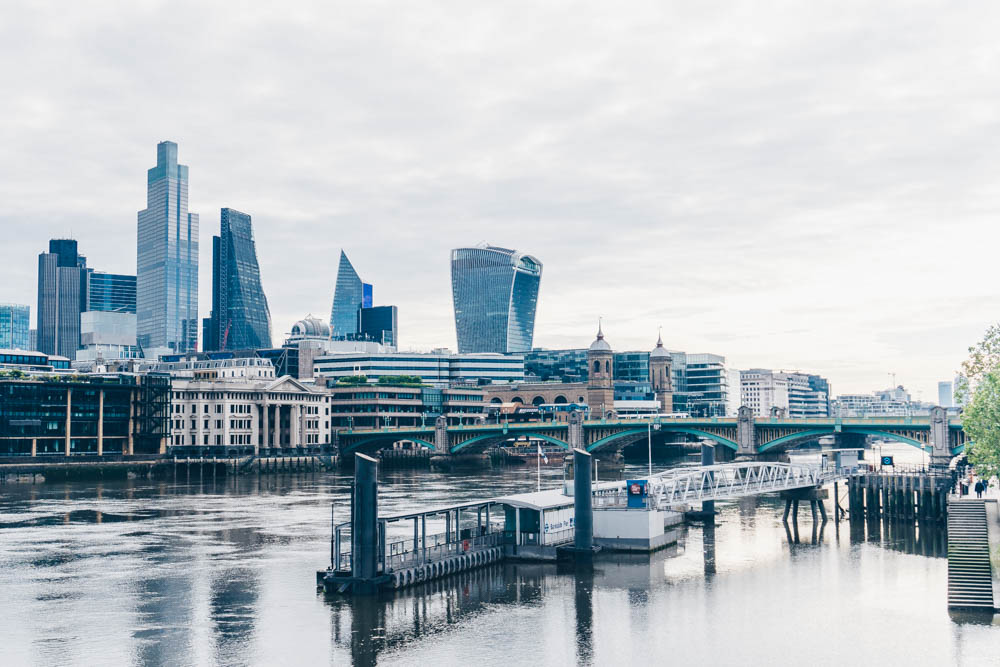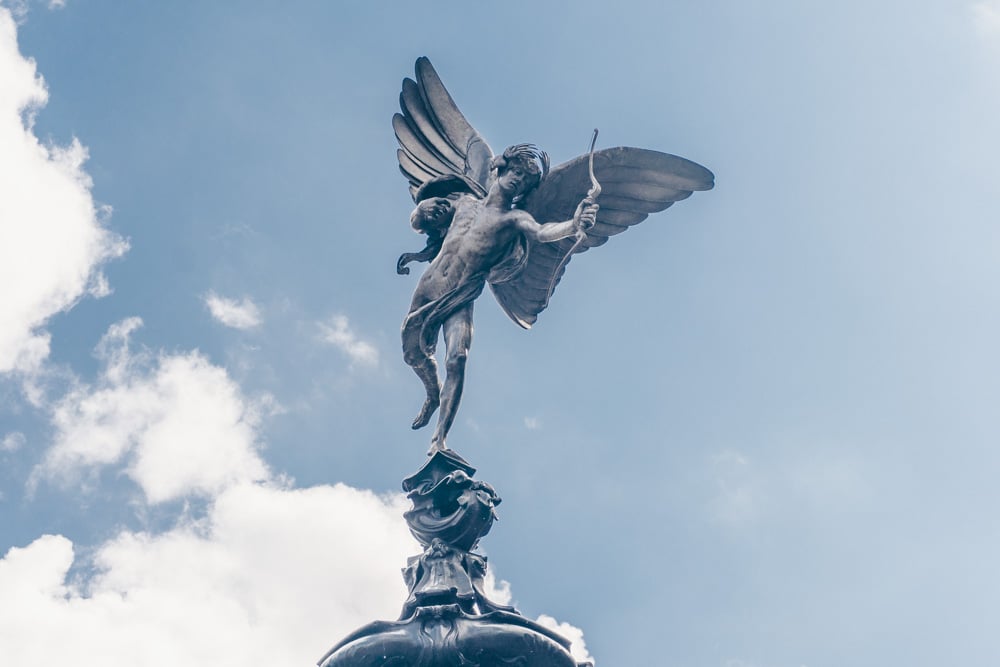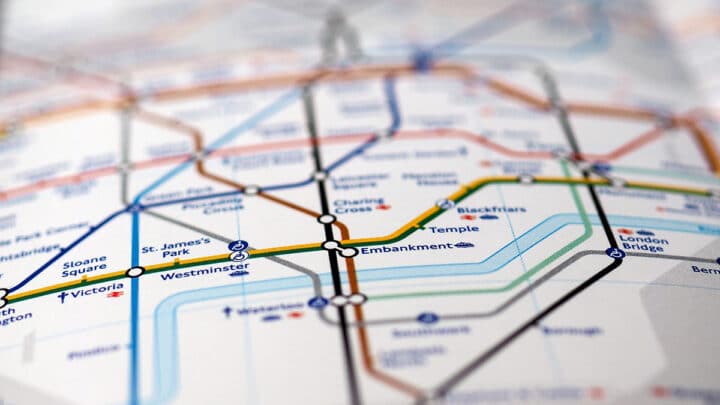
Hopping on the London Underground, or “The Tube,” is a central part of London life. These London Underground facts might just blow your mind.
From the mid-1860s to the present day, the Underground is the artery that transports passengers daily across the city.
And, with such a long history, there are several dozen exciting facts and trivia pieces about the Tube, some known, some unknown. How many of these fun facts about the London Underground do you know?
Interesting Facts about the London Underground
The Underground Dates Back to 1863
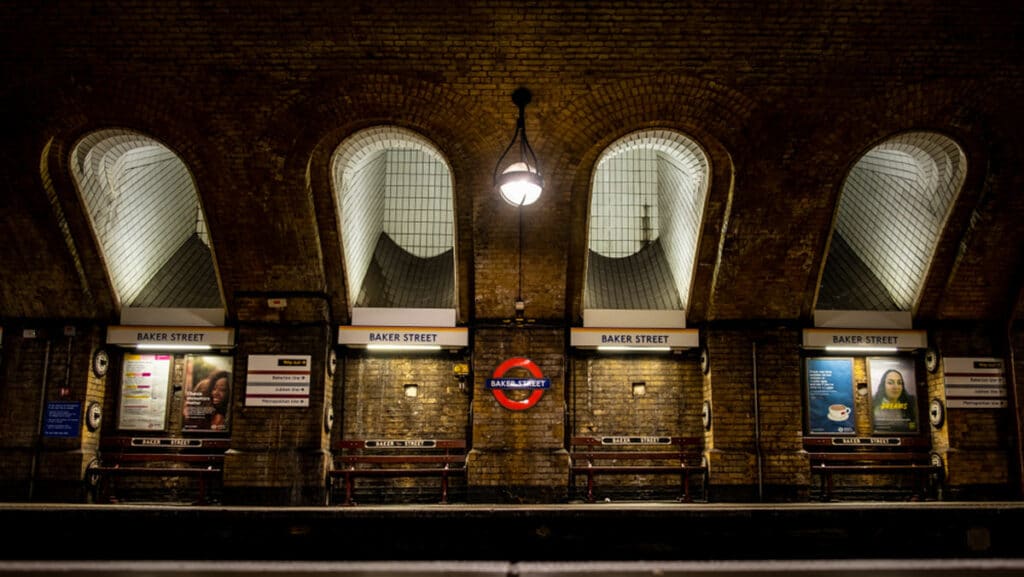
The Metropolitan Line became the world’s first underground railway, opening in 1863 to link Paddington and Farringdon. Trains would stop at Edgware Road, Baker Street, Portland Road, Gower Street (now Euston Square), and King’s Cross stations.
Today the “Met Line” serves 34 stations running from Aldgate to Amersham, with branches to Chesham, Uxbridge, and Watford. In 1894, the railway extended as far as Verney Junction, beyond Amersham, before closing in 1936.
Some Stations Are Built on Mass Graves
The Underground built at least two stations in East London on mass graves. Shudder.
A 2015 excavation at Liverpool Street as part of the work for Crossrail saw around 3,750 skeletons discovered dating back to the 16th and 18th Centuries. The site used to be a municipal churchyard for those on the margins of society, including plague victims.
Meanwhile, Aldgate, the Eastern terminus of the Metropolitan Line, is built above a massive plague pit with more than 1,000 bodies.
Most of the Underground is, erm, Above Ground!
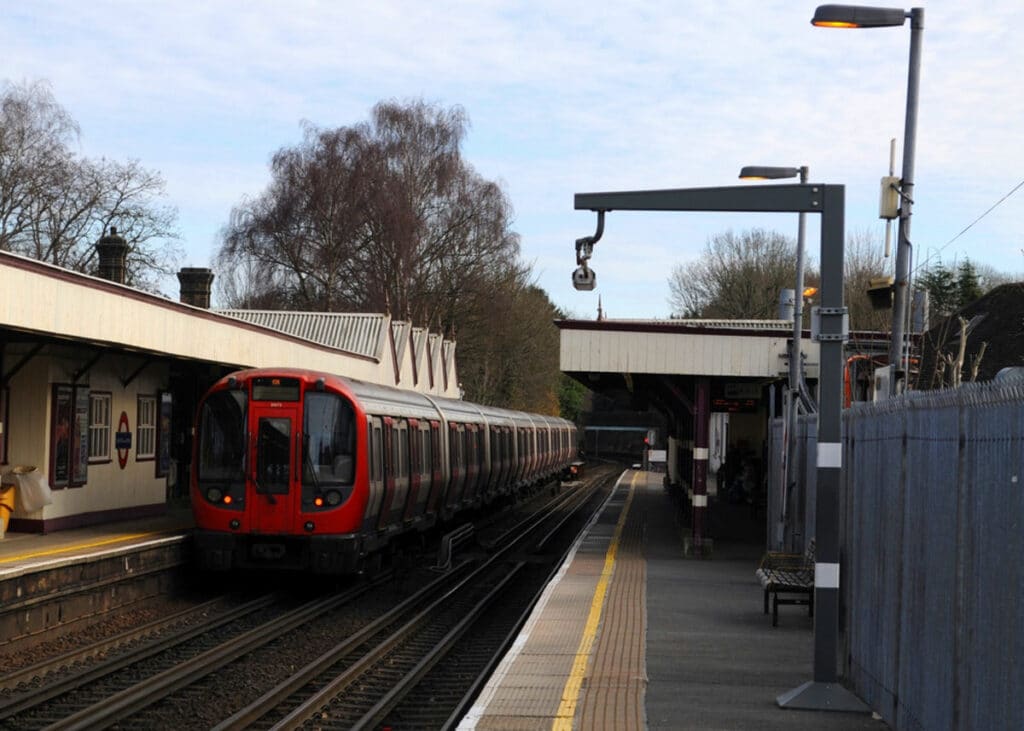
There are 270 stations on the London Underground network, of which, believe it or not, less than half are subterranean.
Only 45% of stations on the tube network are underground, with the remaining 55% above ground. The Metropolitan Line is the line with the smallest proportion of stations underground, with only the section between Finchley Road and Aldgate underground constituting less than a third of the stations.
A Circuit Board Inspired the Underground Map
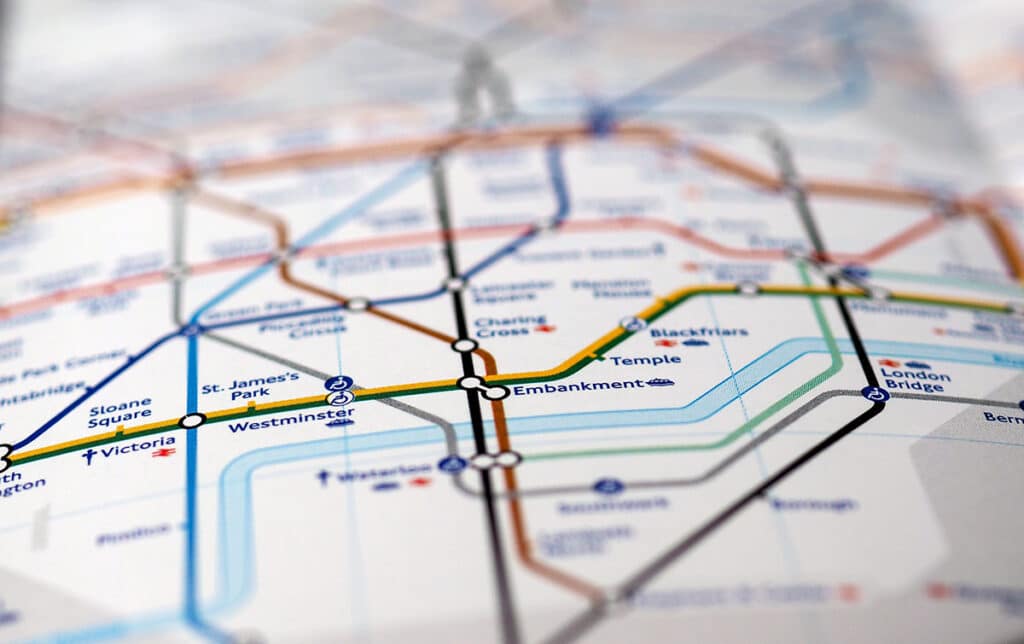
Harry Beck initially designed the famous London Underground map, which has become synonymous globally as a symbol of London.
Beck designed the first iteration of the map in 1933 when he was inspired by an electrical circuit board. This explains the interwoven diagram of coloured lines criss-crossing and interchanging at stations across London.
At first, Beck faced significant resistance as the map didn’t measure distance as other maps, but it has since grown into the public consciousness.
The Tube Can Reach Top Speeds of 60mph!
If you’ve ever wondered, how fast does the tube go – we’ve got you. Although the average speed of a train is 20.5 mph, services on the northern end of the Met Line around Chesham, Amersham, and Chalfont & Latimer reach approximately 62 mph.
Services tend to travel faster on the sections above ground where stations are spaced further apart, while beneath ground services travel slower and between stations closer together.
There Are Nearly 50 “Ghost” Stations
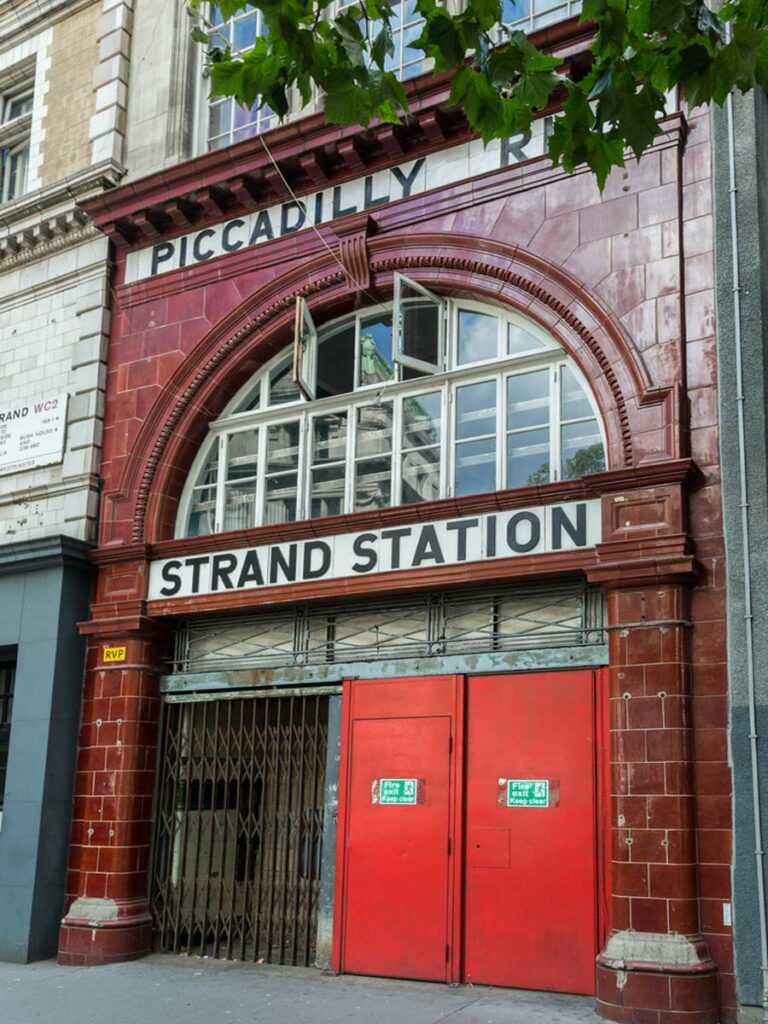
There are 49 abandoned or relocated stations on the Underground network, some of which are still visible as you pass through the tunnels on your journeys.
The two most famous examples are Aldwych Station, a regular on our screens, appearing in several films and TV shows, including Atonement and (our favourite!) Battle of Britain, and Down Street, known as Churchill’s station during World War II, when it became an underground complex of Government offices.
The Long and the Short of It
The longest distance between two stations on the network is, surprise surprise, on the famous Metropolitan Line, where a 6.3km (3.9 mile) section of track separates Chalfont & Latimer and Chesham.
In contrast, the Piccadilly Line section between Convent Garden and Leicester Square is a fraction over ¼ km long. The 260-metre section is the shortest distance between two stations.
Despite the short distance, Covent Garden and Leicester Square remains an extremely popular journey among passengers.
The First Escalator…
The Underground first installed an escalator on the network at Earl’s Court Station in 1911. The public was at first nervous, if not scared stiff, of the moving staircase, not believing it was safe.
Legend has it that the Underground hired a man with a wooden leg named William “Bumper” Harris was hired to ride up and down the escalators all day to underline its safety. While this story may be apocryphal, the London Transport Museum has a tiny statue of William among its collection, lending some credence to the tale.
…and the Longest and Shortest Escalators
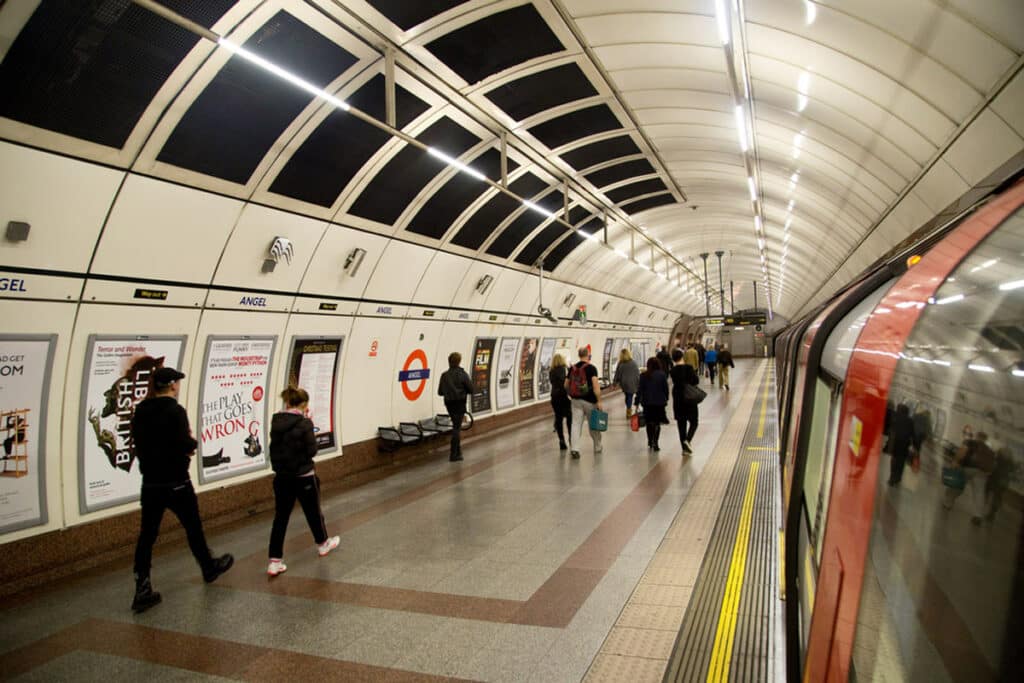
And to escalate the theme of moving staircases a little further, the longest escalator on the network can be found at Angel Station on the Northern Line. The escalators at Angel, reaching from the ticket hall to the platform level, are 60 metres long.
In contrast, you can find the shortest escalator at Stratford Station, which is served by the Central Line and is the Eastern terminus of the Jubilee Line. One of the escalators here is just 4.1 metres long, or, in celebrity metrics, slightly longer than two Michael Jordans laid head-to-toe.
Going Deeper Underground
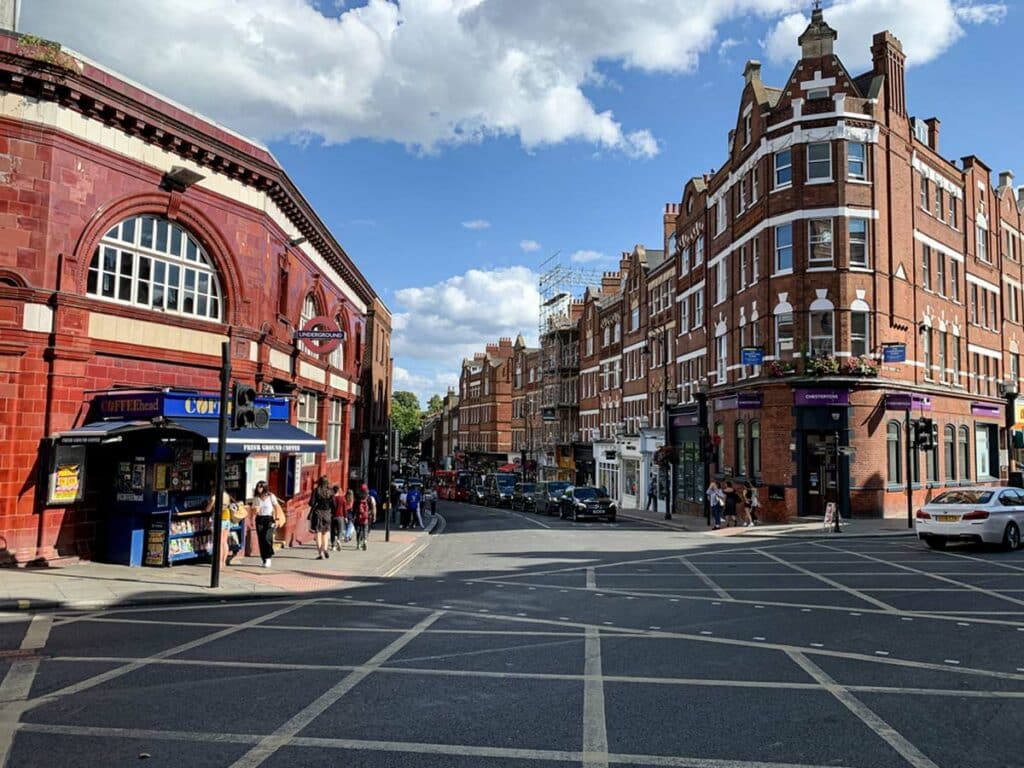
The deepest Underground station is Hampstead on the High Barnet branch of the Northern Line, buried a whopping 58.5 metres beneath the surface.
Hampstead Station is situated on high ground in the centre of the pretty and affluent North London neighbourhood, meaning passengers have to burrow a long way before they find themselves at platform level.
Hampstead Station has the deepest lift shaft, at 55.2 metres on the network, and for those brave souls that enjoy taking the stairs, there are 320 steps from the ticket hall to the platforms.
Padded Cells
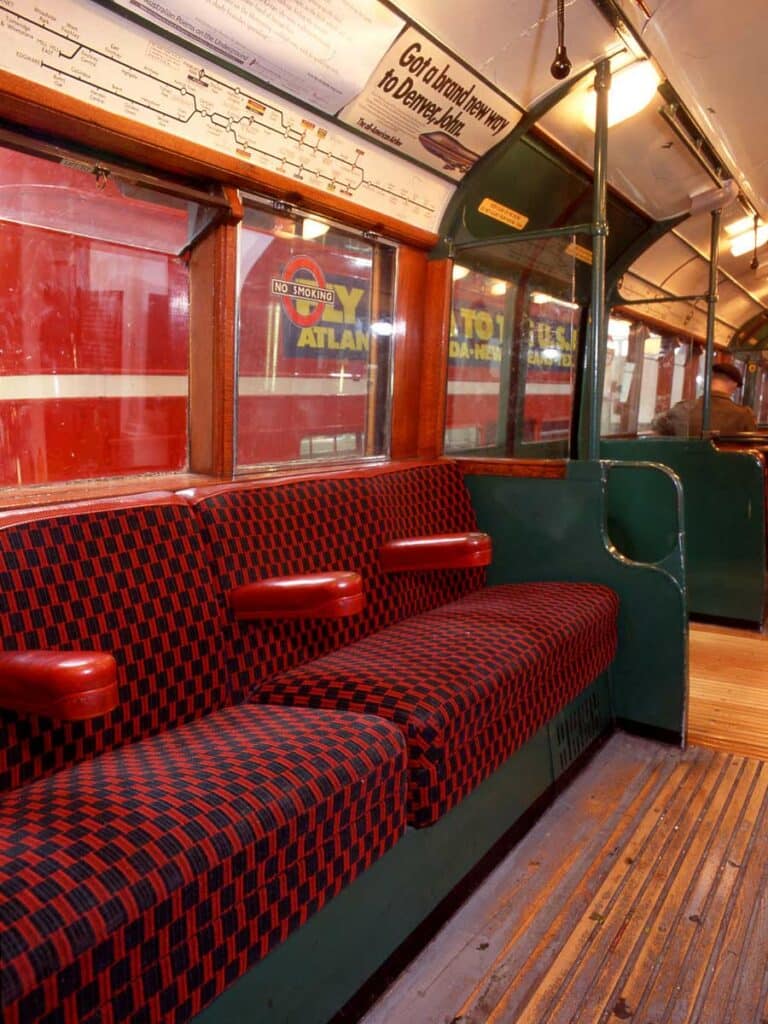
With the earliest Underground trains only travelling underground, carriage designers thought that since there was nothing much to see, not even pretty coloured cabling at window level throughout the tunnels, they didn’t need to install windows on the carriages.
Consequently, the trains were nicknamed “padded cells.” You can find examples of these slightly macabre coffin-like wooden carriages at the London Transport Museum. The carriages had high-backed cushioned seats, much more comfortable than those we’re used to today, and conductors would announce station names. The cars were withdrawn in 1924.
The Most Platforms
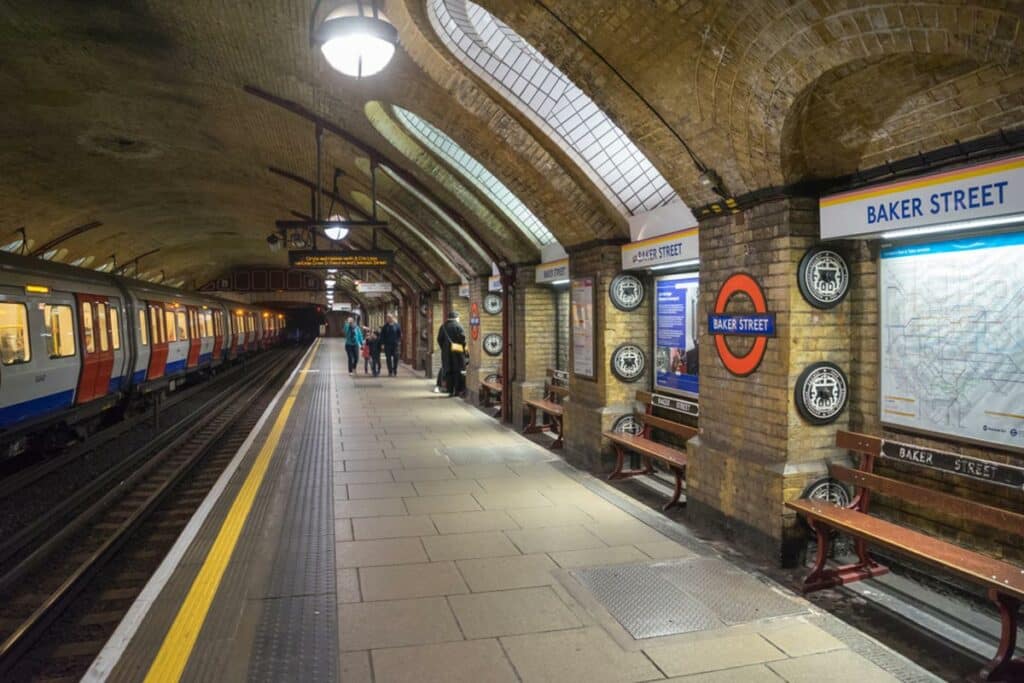
Baker Street is the station that has the most Underground platforms, with a grand total of ten platforms. Although Moorgate station also has ten underground platforms, four are for mainline overground commuter trains, and only six are for tube services.
Baker Street has two platforms for Circle Line and Hammersmith & City Line trains from Edgware Road, two for the Jubilee Line, two for the Bakerloo Line, and four for the Metropolitan Line. Two are through platforms for onward journeys towards Aldgate, while the others are bay platforms for terminating services.
One for Fans of Word Puzzles!
Do you like word puzzles? If so, how many London Underground stations do not contain any of the letters from the word “underground?”
We’ll give you the answer at the bottom of the article.
The Viking Line
Some of the London Underground line names are, let’s face it, a bit bland. The Circle Line used to be a circle, the Central Line runs through central London, and the Hammersmith and City Line runs between Hammersmith and the City of London.
London Underground used a little more imagination for the Jubilee Line, which was opened to celebrate Queen Elizabeth II’s silver jubilee. At the same time, the Bakerloo Line was named for Baker Street and Waterloo.
Our favourite by far never made the cut, as royalty pulled rank and took hold of the Victoria Line rather than the vastly preferable Viking Line. Proposals for the joyously berserk name were made as the line ran between Victoria and King’s Cross. Thankfully though, the Walvic Line also hit the cutting room floor!
The Lying Russell Square Sign
We are absolute sticklers for accuracy, with top-class research underpinning every single one of our in-depth articles (wink, wink). Therefore, we simply cannot let Transport for London off the hook with their sign at Russell Square Station claiming that the station has 175 stairs.
Whoever counted them must have been distracted since there are a mere 171 steps at the station. Trust us; we’ve counted them. And you can too!
The good news is that if you want to take the stairs and feel that 175 are too many to handle, your journey will be shorter than you expect.
Jerry Springer Was Born on the Underground
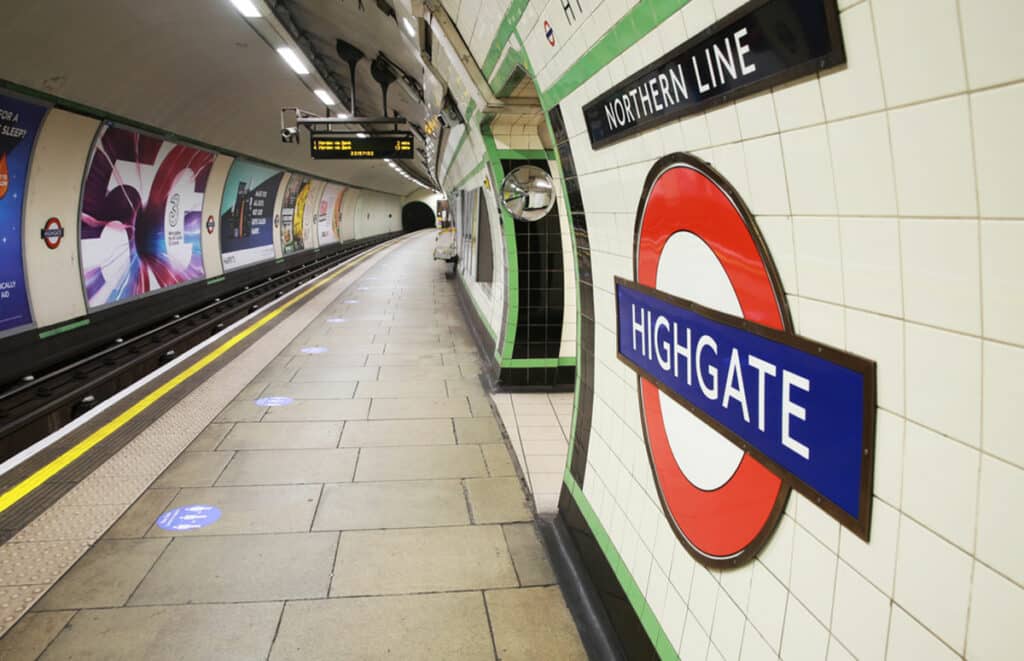
This one is our favourite fact of all. The former mayor of Cincinnati and “King of Chat” Jerry Springer was actually born on the Underground network in 1944.
He was delivered on a platform at Highgate Station on the Northern Line as his mother, Margot, sheltered from a German bombing raid in February 1944. Jerry lived in nearby East Finchley until 1949, when he emigrated to the United States with his parents.
It’s unclear whether his taste for the absurd that characterised his talk shows in the States arose from his early experiences of the Underground, but who knows!
Northern Bias
Although the cool recent Battersea extension of the Northern Line has partially upped this ratio, passengers can rightly throw accusations of a northern bias at the London Underground, with fewer than 10% of tube stations situated south of the Thames.
The only lines that peek their heads south of the river are the Bakerloo Line, the Jubilee Line (which hastily retreats north again after a short diversion!), the District Line, the Victoria Line and the Northern Line.
Even the Docklands Light Railway (DLR) and London Overground networks are heavily biased towards areas north of the Thames!
Euston to King’s Cross is Confusing
If you find directions tricky, this may not be the fact for you. However, if you want to travel from Euston to King’s Cross on the Underground, you can travel Southbound or Northbound. Confusing, right?
Yes and no. Travelling from Euston to King’s Cross involves travelling East from Euston to King’s Cross, the next station. This is a Northbound journey on the Victoria Line and a Southbound journey on the Northern Line.
This is the only example of the same journey heading in “different” directions on different lines on the entire network.
The First Woman Driver was Hannah Dadds
It was an astonishing 115 years before the first woman London Underground driver took the train’s controls, with Hannah Dadds joining the District Line. Shortly afterward, her sister Edna joined the team to become part of the Underground’s first all-woman train crew.
Considering how women took on “men’s” roles during both world wars, this fact was a massive surprise to us. However, when Maida Vale opened on June 6, 1915, as World War I was blazing away in Northern France, it was staffed entirely by women.
Trafalgar Square + Strand = Charing Cross
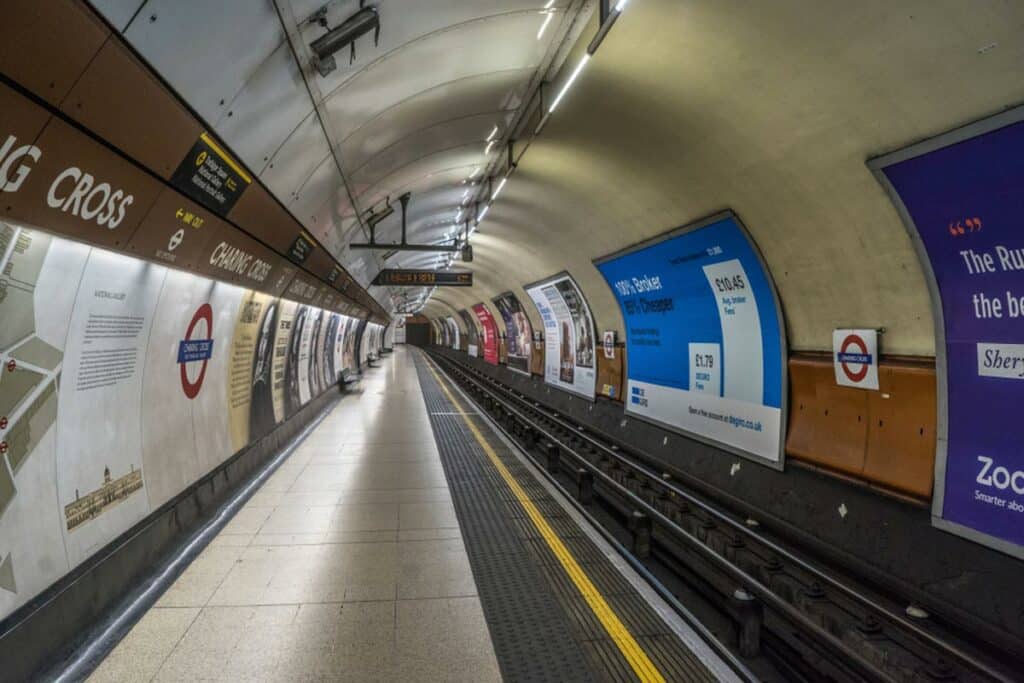
Charing Cross Underground Station is an amalgamation of two previous stations that came together in 1979 to form the station we know and love today.
London Underground combined Trafalgar Square on the Bakerloo Line and Strand on the Northern Line to create Charing Cross, no doubt in part to help simplify the complexities of the Underground map.
And Finally…
The only station on the Underground network not to contain any letters of the word “underground” is the South London outpost on the Northern Line, Balham!

